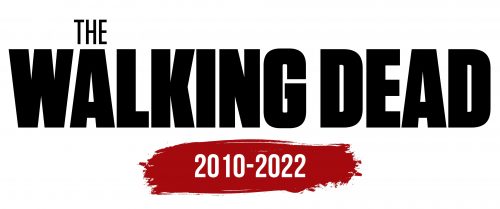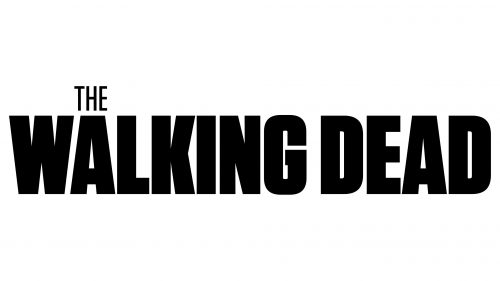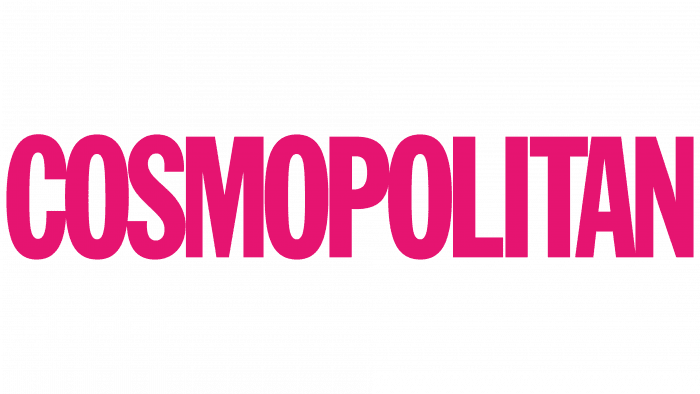The Walking Dead logo evokes a sense of monumentality and chilling horror. Its massiveness and dark atmosphere emphasize the inevitability of the approaching apocalypse, prompting thoughts about the future of humanity and the planet. This symbol seems to warn of global catastrophes affecting everyone, heightening tension and stirring anxiety. It visually conveys the looming threat over the world. It hints at fateful events, foreshadowing the film’s massive popularity and success among viewers immersed in chaos and survival.
The Walking Dead: Brand Overview
The history of The Walking Dead began in 2003 when writer Robert Kirkman and artist Tony Moore launched their comic book series of the same name. Published by Image Comics in October 2003, the first issue quickly grabbed attention for its unique take on the zombie apocalypse, focusing on human relationships and survival in a harsh world.
The comic series steadily grew in popularity, praised by readers and critics alike. By 2009, it had become one of the best-selling independent comics, catching the eye of TV producers.
In 2010, AMC announced plans to adapt the comic for television. Frank Darabont, known for his work on The Green Mile and The Shawshank Redemption, was brought on as showrunner and executive producer. Andrew Lincoln was cast as Rick Grimes, with Jon Bernthal playing Shane Walsh. The show premiered on AMC on October 31, 2010, drawing a record 5.3 million viewers. Critics praised the performances, tone, and visuals of the series.
Due to the success of the first season, the series was quickly renewed for a second season, which premiered in October 2011. The second season expanded the show’s universe by introducing new characters and developing existing storylines.
By the third season, in 2012, it had become the highest-rated drama series on cable, surpassing many broadcast shows and cementing its place as one of the biggest television phenomena of the decade.
In 2013, AMC launched Talking Dead, a companion talk show aired after each episode. Featuring interviews with cast and creators, the show became a hit with fans. The first television spin-off, Fear the Walking Dead, debuted in 2015. It is set in a different part of the U.S. during the early days of the apocalypse. These expansions broadened the universe and attracted new viewers.
2018, a major change occurred when it was announced that Andrew Lincoln would be leaving the main series during its ninth season. Although fans were disappointed, the show continued to evolve by focusing on other characters.
In 2020, AMC revealed that the eleventh season would be its last. However, the franchise would live on through spin-offs and feature films. A new spin-off, World Beyond, aimed at younger audiences, also premiered that year.
The final season began airing in 2021. To give fans a proper farewell, the season was divided into three parts. In 2022, AMC announced several new spin-offs, including shows focusing on Daryl Dixon, Maggie and Negan, and Rick and Michonne, ensuring the franchise’s future.
The series aired its final episode on November 20, 2022, after 12 years on the air. The series finale was well-received by fans and critics, drawing millions of viewers.
As of 2023, the franchise remains alive and well, with new spin-offs in production and Fear the Walking Dead airing. The show began as a niche comic book series and has grown into a global media sensation, impacting pop culture and the television industry. It revitalized the zombie genre and raised the standard for cable dramas, proving that genre shows could succeed with mainstream audiences and critics.
Meaning and History
What is The Walking Dead?
This gripping post-apocalyptic thriller radically transformed the zombie genre in television series. The plot focuses on a world ravaged by a mysterious plague that turns the dead into flesh-eating “walkers.” At the center is a group of survivors trying to maintain their lives and humanity in this dangerous new world. However, the show’s main focus is not on the zombies but on how people respond to societal collapse, moral dilemmas, and willingness to fight for their loved ones. Key themes of the series include leadership, morality, and the difficult choices people make to survive. The atmosphere remains emotionally charged due to the intriguing cast, where each character faces personal struggles. The show is known for its graphic violence, shocking plot twists, and willingness to kill off key characters, which keeps viewers on edge and makes every episode unpredictable.
2010 – 2022
The logo for “The Walking Dead” is rendered in a large, rigid font, symbolizing the inevitability and scale of the unfolding catastrophe. The black lettering sets a grim tone and evokes a sense of anxiety, as though the viewer is confronting an impending tragedy descending upon humanity. It is a visual counterpart to the post-apocalyptic world where the living must fight for survival.
The contrast between the small word “The” and the massive letters highlights the disparity between powerless individuals and the immense threat they face. The small “The” seems to represent people’s weakness in the face of the zombie apocalypse, the overwhelming force trying to consume them.
The large capital letters “WALKING DEAD” appear as if pressing down on the screen, surrounding everything with their weight. This symbolizes the barrier separating the living from the dead or the hopelessness the characters encounter throughout the story.
The black color is not just darkness; it symbolizes danger and death, which fits the series’ context. In this world, death comes from outside in the form of zombies and constantly threatens from within, eroding the characters’ morality and psyche.





